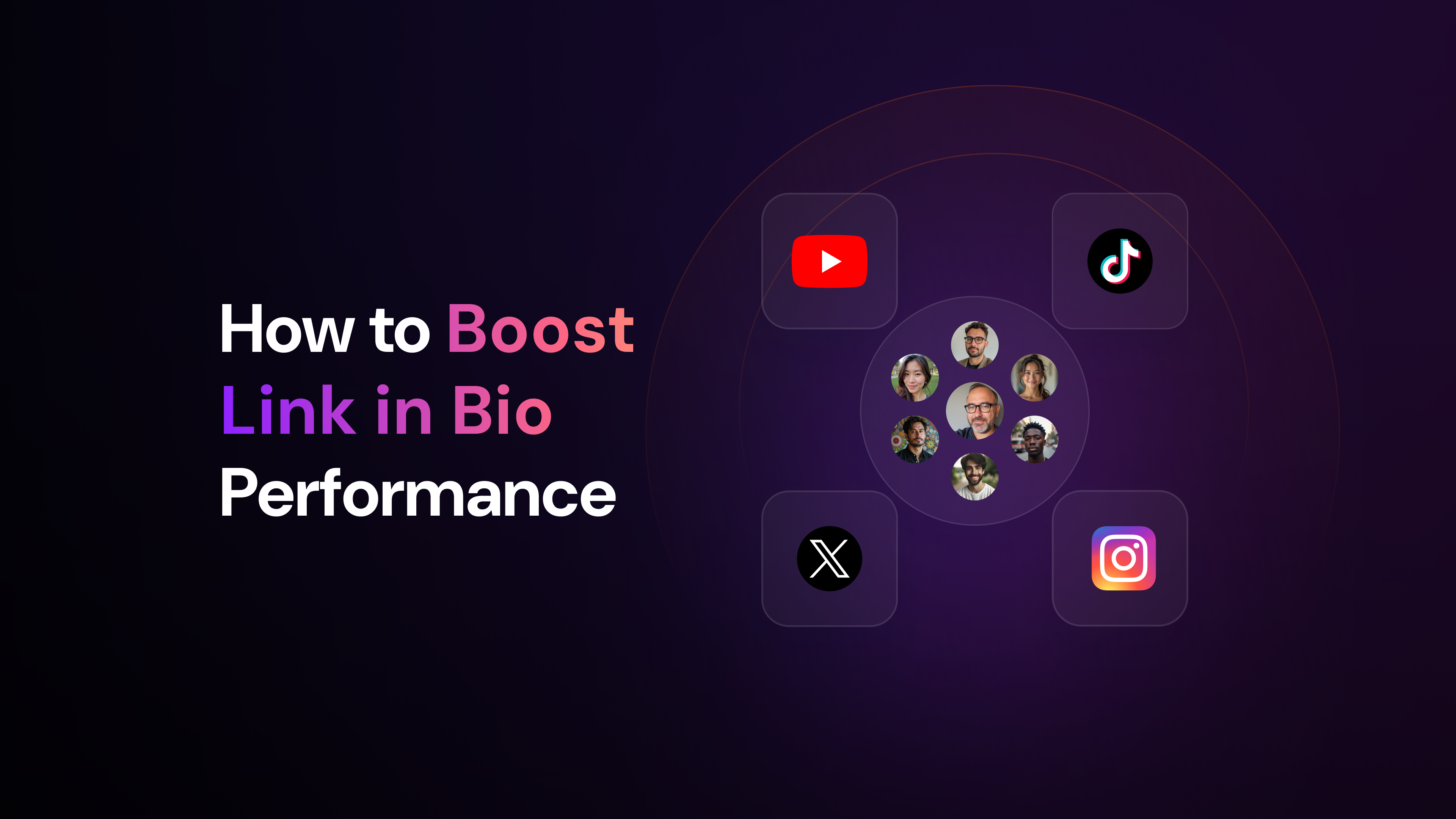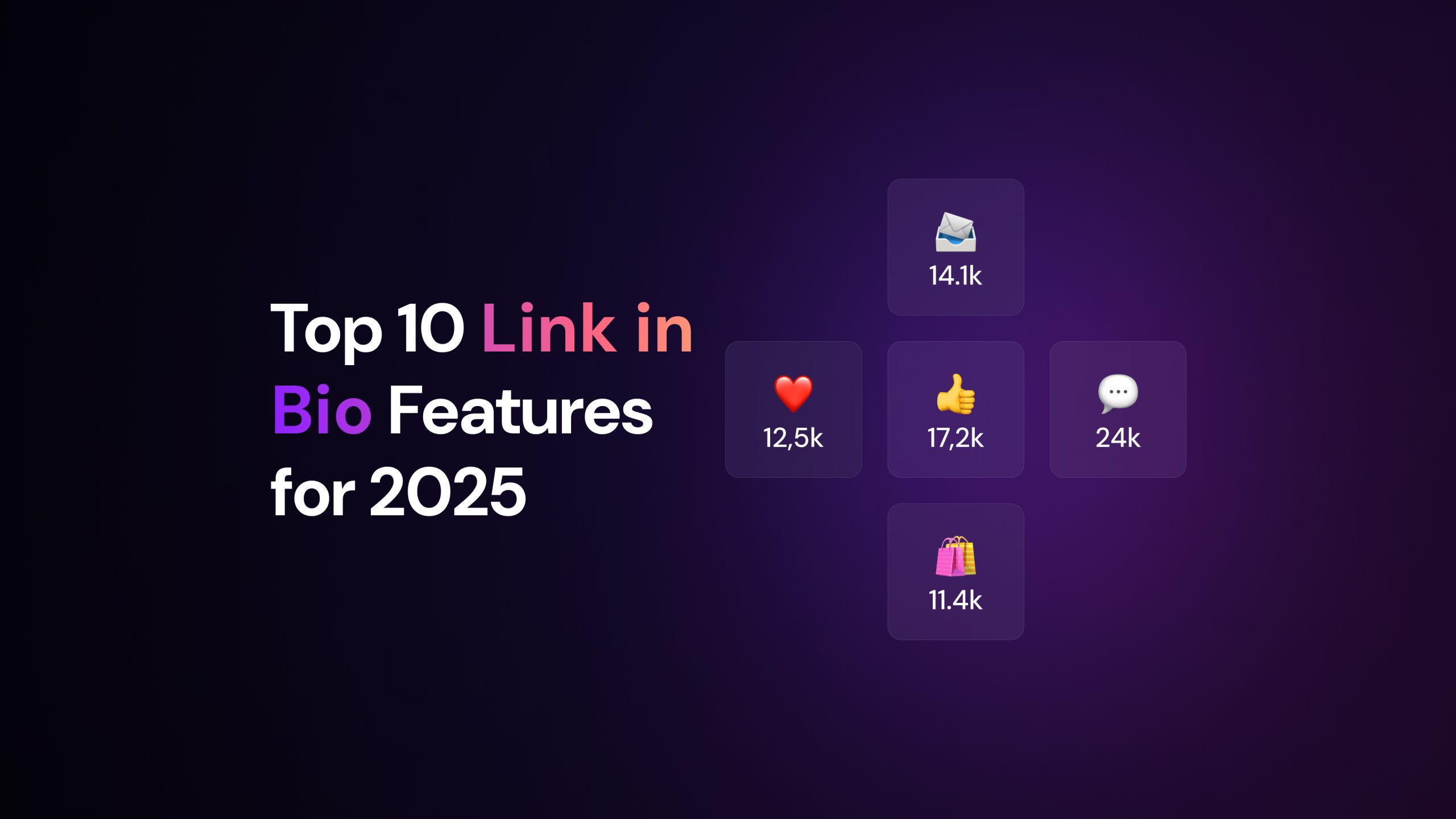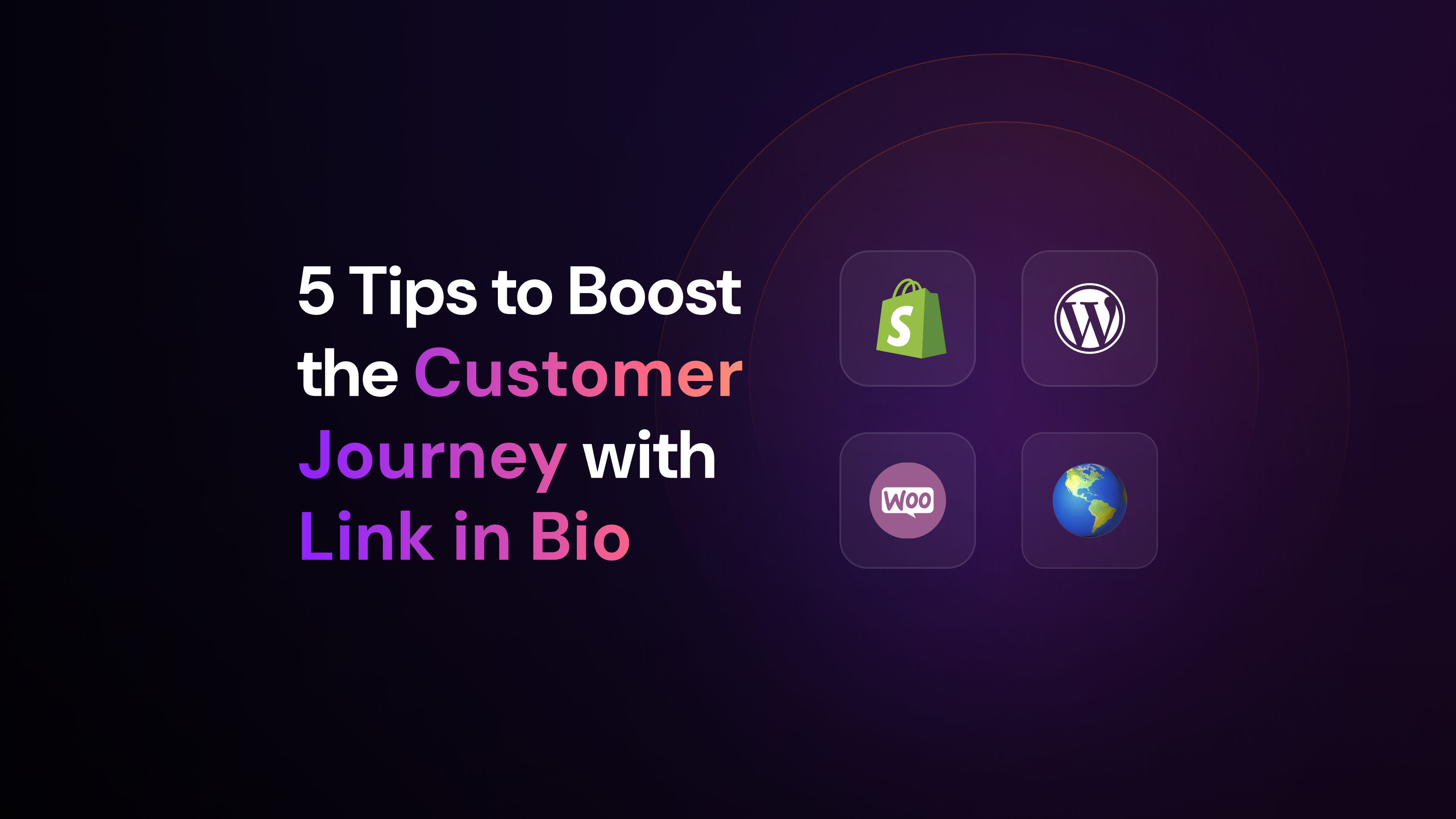Having a single link in your social media bio can only do so much for your digital presence. Whether you are a content creator or a brand, a well-designed link in bio page acts as a dynamic engagement hub to centralize everything you offer.
Creating a micro-site on your link in bio can enhance your online presence, whether showcasing your latest content, product catalog, or community events. This quick guide explains the importance of a micro-site and offers tips for optimizing link in bio performance.
Why is a Link in Bio Page Important?
Simply put, a link in bio landing page enables you to expand your online presence in ways that social media can’t. Platforms like Instagram and TikTok only allow users to add a limited number (usually just one) of links in their bio, which can be frustrating if you are a brand or creator with multiple pieces of content to showcase.
A link in bio page solves this limitation by acting as a single entry point to everything you want to share. Whether that’s a blog post, online store, or contact form, it enables you to direct your audience to your most important content and create a seamless customer journey, from social discovery to deeper engagement.
5 Ways to Improve Your Link in Bio Performance
1. Choose an all-in-one link in bio tool
Your link in bio page can be much more than just a landing page filled with different links. When you choose to work with a robust link in bio platform, your page transforms into an interactive micro-site where your audience can connect over your content and brand, engage with one another, browse your product catalog, and sign up for events.
Make sure your link in bio features a little of everything you want to share with your audience. Let’s say you are a fitness content creator. In that case, you would like to have videos of your best workouts, centralize all of your essential social media links, organize a product catalog, or more. When you count with a powerful link in bio tool, all of this (and much more) can be done in a matter of minutes.
2. Set up page elements
Once you choose a link in bio tool to work with, try making the most of it. After deciding which kind of content you want to showcase on your micro-site, it is time to specify the elements that will deliver this information.
Most link in bio tools offer page elements such as:
- Social profile icons: Like the name suggests, these use the logo of each platform to help identify which profile you are showcasing. This detail allows your Instagram, TikTok, and YouTube audiences to be redirected to your other channels, regardless of where they are coming from.
- Buttons: These allow you to link to important pages, such as blog posts, product category pages, special promotional pages, and more.
- Featured banner: Working with featured banners (and other items) is a great way to highlight your most valuable content or products. Say you’re a travel influencer and you’ve just finished uploading a video on YouTube about your latest trip. You can use a featured banner to draw attention to this content and direct your visitors to it.
- Lead generation CTA and form: Utilizing these on your link in bio page allows you to capture valuable leads that can be nurtured in future email campaigns.
3. Use A/B testing for different CTAs
Not all calls to action (CTAs) perform the same, especially when running different campaigns or showcasing new products. That’s why you should always run A/B tests on your link in bio page and compare different CTA phrases, designs, and placements. Sometimes, even the slightest change can help you pinpoint which message drives the most clicks and conversions.
Here are some extra tips on how to conduct A/B testing on your link in bio micro-site:
- Experiment with different CTA words to understand what catches your audience’s attention. Whether it’s “Shop Now,” “Get the Free Guide,” or “Join the Community,” testing helps you pinpoint which message drives the most clicks and conversions.
- Small tweaks in color or button position can lead to significant improvements in engagement, so don’t be afraid to change your layout until you understand what works best for your audience.
- Test CTA placement based on user behavior. Try positioning your primary CTA at the very top, middle, or bottom of your Link in Bio page to see where it gets the most engagement. Depending on whether your audience is quick to click or prefers to scroll through options, placement can significantly impact performance.
By experimenting with different styles of CTA, words, and locations, you can refine your approach and maximise engagement. Regular testing ensures your link in bio stays optimized as audience behavior shifts over time.
4. Embed at least one video
Adding a moving element to your link in bio micro-site is a proven way to increase user engagement and click-through rate. Research shows that 28% of all link in bio clicks come from video blocks.
Videos are an easy way to make your link in bio page feel dynamic, rather than static. Whether you’re promoting a music video, your latest podcast episode, an interview clip, or a captivating ad, embedding videos is a proven way to grab your audience’s attention and keep them engaged.
With robust tools such as Arena Link in Bio, you don’t even need to redirect fans to YouTube, as the platform allows you to embed videos right in your link in bio landing page, making it easier for visitors to watch without ever leaving your link in bio.
5. Turn your link in bio into a community space
Your link in bio landing page doesn’t have to be a one-way street. When you allow your audience to interact with your brand and like-minded individuals, users keep coming back to your link in bio for more.
However, it is important to note that not all link in bio tools offer community-building features. Advanced tools like Arena Link in Bio enable you to transform your micro-site into a complete community engagement hub. By adding link in bio features like live chat and forum-style discussions, you empower your fans to keep the conversation going, creating a community flywheel that drives growth.
Whether you’re a musician, creator, or brand, fostering real-time interactions directly on your link in bio helps deepen relationships, build loyalty, and turn passive followers into active community members.
Best Practices to Maximise the Impact of Your Bio Links
To ensure your bio links are effective in driving traffic and engagement, consider these best practice tips:
- Use a shortened, branded URL: Shorten your website’s URL using a branded link shortener to make it more memorable and appealing.
- Include ‘Link in Bio’ Calls-to-Action: It may seem obvious, but don’t forget to mention your link in bio page on your social media captions, posts, and stories, and remind your audience to “click the link in bio” to encourage engagement.
- Match links to business goals: Align your bio links with your specific business objectives, whether it’s driving sales, capturing leads, or increasing blog readership.
- Monitor and optimise: Analyse the performance of your link in bio page regularly, especially if you are working with A/B tests and campaigns. Including this on your weekly to-do list will help you monitor and optimize your efforts.
Ready to Upgrade your Link in Bio Page?
Now that you have all this information at hand, it is time to put it into action and improve your link in bio landing page. After all, it is more than a mere collection of links, but rather a powerful tool to showcase your brand, drive traffic and conversions, and build a lasting relationship with your fans.
Remember, your link in bio should evolve as your content, audience, and goals grow. Keep running A/B tests, monitoring performance, and understanding your users’ needs.
If you want to build (or improve) your link in bio landing page, click here to start using Arena Link in Bio for free and create a micro-site within minutes!


